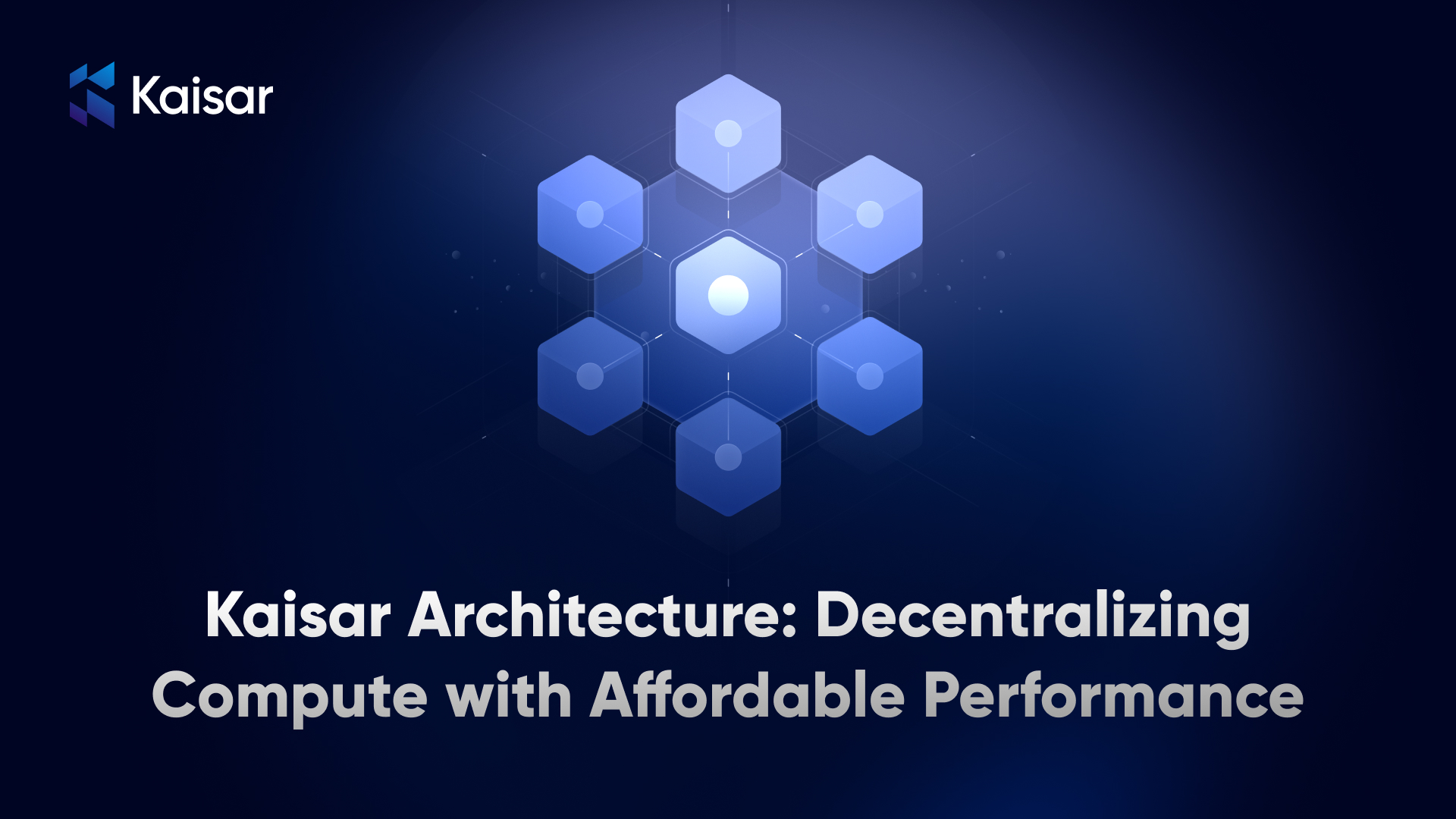As artificial intelligence and machine learning workloads becoming compute-intensive, traditional centralized infrastructure is challenged to address the costs associated with scaling as well as the costs for day-to-day users.
Kaisar Network addresses this issue through its decentralized architecture powered by PEAQ blockchain and allows every day users to contribute to and earn from the GPU resources they provide.
In this article we will explain how Kaisar architecture works, with each component playing a specific role to form a cohesive, and scalable compute ecosystem.
Kaisar Network: Components
Kaisar has many components with different roles within the framework but together they form the foundation of infrastructure.
Kaisar Zero Node (Chrome Extension)
The Kaisar Zero Node is a chrome extension that is lightweight and is a entry point to the Kaisar Network.The Kaiser Zero Nodes also allows users :
- To keep track of essential performance indicators like device uptime and location.
- Input idle hardware into the Kaisar Network.
- Earn income by keeping their hardware online and networks functioning.
Overall Kaisar Zero Node allows GPU providers to convert their everyday device into a generating revenue node within a decentralized AI compute grid.
Kaisar OneNode
The Kaisar OneNode is the underlying engine of the Kaisar Network. OneNode builds and intelligently coordinates GPU tasks over decentralized system through a framework of :
Kaisar Providers
Providers provide with GPU compute capacity within the Kaisar ecosystem, whether an individual or organizational provider. The only requirement is a machine with GPU capacity (eg. desktops, servers, bare-metal hardware).
Primary responsibilities of Kaisar providers include:
- Register compute nodes via wallet connection.
- Run verification benchmarks and uptime checks.
- Report real-time availability of all resources for services.
- Earn tokenized rewards from the PEAQ Blockchain as a Provider.
Kaisar Checkers
Checkers are the decentralized verifiers validating the legitimacy and health of compute resources through Proof of Physical Work (PoPW).
Primary responsibilities of Kaisar checkers include:
- Verify all node uptime, health, and performance
- Simulate workloads to test real-time capability
- Sign and submit validation submissions to blockchain
- Earn rewards for providing honest verification of services
Kaisar Explorer
Explorer is the visual and informational layer of the Kaisar network, an advanced data dashboard, providing real-time metrics. With Explorer users can –
- View on-chain performance metrics and service patterns
- View which Providers are available and the health of their nodes
- View performance metrics of the network as a whole.
Kaisar Cloud (End-User Interface)
For consumers of compute power (AI developers and researchers), Kaisar Cloud functions as a front facing portal for end-users.
Within Kaisar Cloud users can:
- Connect their wallets
- Rent GPU containers or clusters
- Payment via blockchain transaction
- Automated repayment (in reward points) for service disruptions
- Real-time visibility of service usage.
End-to-End Workflow
The power of Kaisar is in how painless is for end users to go from connecting their Web3 wallet all the way to deploying, and using, a GPU-powered container. The process is divided into three steps:
Step 1: Service Initiation
The process begins with the user making the initial connection through the Console Portal to their Web3 wallet. Once connected, the user purchases a compute container using tokens. This transaction is immediately logged in the blockchain, maintaining the benefits of transparency and immutability.
Next stage, the blockchain authenticates the compute service request and logs traffic through to and from the compute service. It validates the transaction and prepares the system for deployment.
Step 2: Service Deployment
Once successfully initiated, the VPN service, as a component of Kaisar Infrastructure, exposes the required ports for container access. The system then commands the Provider’s Worker Node to deploy the same requested container. Upon deployment, the user is notified and subsequent credentials to access are then provided.
Step 3: Service Utilization
All things in place, the user can connect to the compute container to execute compute intensive workloads. Workflows are executed in real-time and notification logs and performance data are logged on-chain in order to provide accountability and monitor resource use.
Conclusion
As mentioned above, Kaisar Network demonstrates the power of decentralized infrastructure with intelligent design. By leveraging distributed GPU pools, with performance verification, while providing on-chain transactions across stable ecosystems.
Kaisar modular architecture also provides for rapid scaling, which is important for managing the increasing demand for GPU compute assets to undertake AI workloads. In fact, with high levels of asynchronous performance, transaction costs are also a fraction of the cost of the dominant models offered through large centralized cloud providers.
Join Kaisar Network
Ready to scale your projects with affordable GPU resources? Join Kaisar Network today and harness the power of DePIN. Visit kaisar.io to get started.

